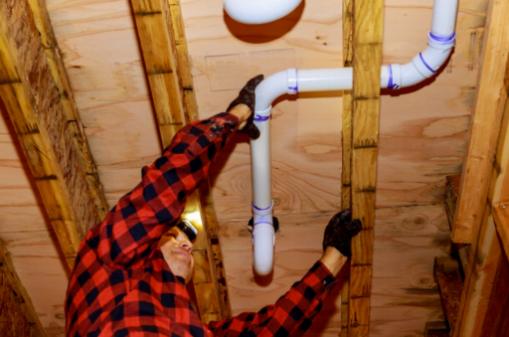DIY Pipe Insulation: How to Protect Your Home from Costly Damage
22 November 2025 by Ronnie K.Ensuring that your home's pipes are properly insulated is a crucial aspect of maintaining the overall functionality and safety of your living space. In this guide, we will explore the importance of pipe insulation and provide you with the necessary steps and tips to ensure that your pipes are well-protected from costly damage. From choosing the right insulation material to tackling common issues, this article will equip you with all the information you need to safeguard your home's pipes.

Understanding the Importance of Pipe Insulation
However, many homeowners overlook the importance of properly insulating their pipes. Pipe insulation is crucial for protecting your home from costly damage caused by freezing temperatures and condensation. Without proper insulation, pipes are at risk of freezing, bursting, and causing extensive water damage to your property. Additionally, uninsulated pipes can lead to energy loss and increased utility bills. It is important for homeowners to understand the significance of pipe insulation and take proactive measures to protect their home.Choosing the Right Insulation Material for Your Pipes
When it comes to insulating your pipes, choosing the right insulation material is crucial for ensuring the long-term effectiveness of your insulation. There are various types of insulation materials available, including fiberglass, foam, and rubber. Each material has its own unique properties and benefits, so it's important to consider factors such as cost, durability, and ease of installation before making a decision. By selecting the right insulation material for your pipes, you can effectively protect them from freezing, condensation, and other potential issues, ultimately saving you time and money in the long run.Step-by-Step Guide to Insulating Your Pipes
Here’s a step-by-step guide to help you insulate your pipes effectively.1. Gather the necessary materials: Before you begin, make sure you have all the materials you need, including pipe insulation material, a utility knife, measuring tape, and duct tape.
2. Measure the length of the pipes: Use a measuring tape to determine the length of the pipes you need to insulate. Be sure to measure accurately to ensure you purchase the correct amount of insulation material.
3. Cut the insulation material: Using a utility knife, carefully cut the insulation material to the appropriate length for each section of pipe. Make sure to cut the material straight to ensure a tight seal around the pipe.
4. Install the insulation: Place the insulation material around the pipes, ensuring a snug fit. If the insulation material has a split seam, be sure to seal it with duct tape to prevent air leakage.
5. Secure the insulation: Use duct tape to secure the insulation material in place. Be sure to wrap the tape tightly around the insulation to prevent any gaps.
6. Insulate any exposed valves or fittings: Don’t forget to insulate any exposed valves or fittings along the pipes to ensure comprehensive protection. By following this step-by-step guide, you can effectively insulate your pipes and protect your home from potential damage. Regularly inspect and maintain the insulation to ensure it remains in good condition and continues to provide adequate protection.
Tips for Maintaining and Inspecting Pipe Insulation
When it comes to maintaining and inspecting pipe insulation, there are a few key tips to keep in mind. Regular maintenance and inspections are important to ensure that your pipes remain properly insulated and to catch any issues before they become costly problems. Here are some tips for maintaining and inspecting pipe insulation:1. Regularly check for signs of wear and tear on the insulation, such as cracks, tears, or gaps. These can compromise the effectiveness of the insulation and should be repaired or replaced promptly.
2. Look for any signs of moisture or water damage around the pipes, as this could indicate a leak or a problem with the insulation. Address any leaks or water damage immediately to prevent further issues.
3. Inspect the insulation for any signs of pests or animals that may have damaged or compromised the insulation. It's important to address any pest issues and repair the insulation to prevent further damage.
4. Keep an eye on the temperature of the pipes, especially during extreme weather conditions. If the pipes feel excessively cold to the touch, it could indicate that the insulation is not effectively protecting them from the elements.
5. Regularly clean and maintain the insulation to prevent debris or dirt from accumulating and compromising its effectiveness. By following these tips for maintaining and inspecting pipe insulation, you can help ensure that your pipes remain well-protected and that your home is safe from costly damage.